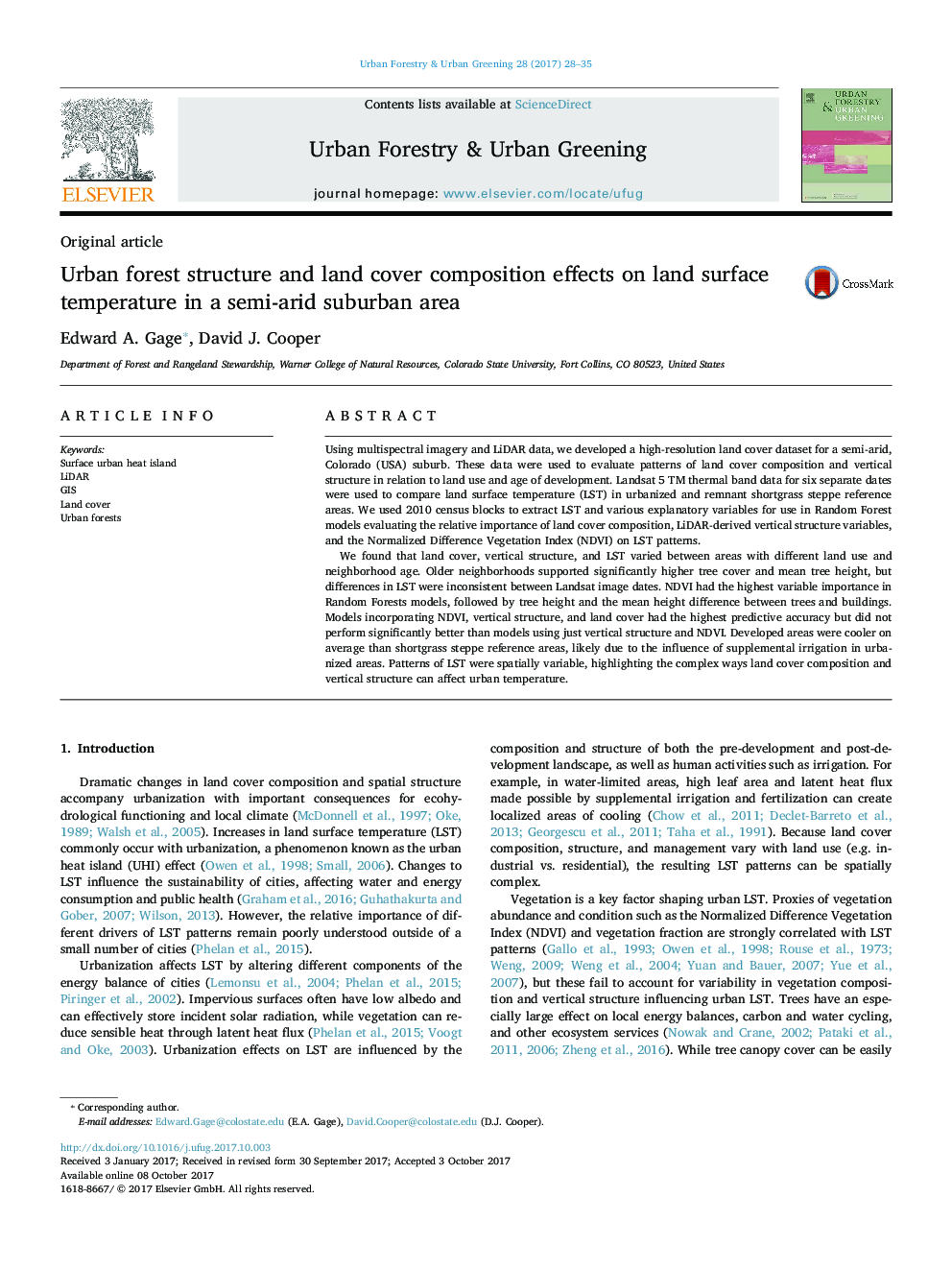| Article ID | Journal | Published Year | Pages | File Type |
|---|---|---|---|---|
| 4759986 | Urban Forestry & Urban Greening | 2017 | 8 Pages |
Abstract
We found that land cover, vertical structure, and LST varied between areas with different land use and neighborhood age. Older neighborhoods supported significantly higher tree cover and mean tree height, but differences in LST were inconsistent between Landsat image dates. NDVI had the highest variable importance in Random Forests models, followed by tree height and the mean height difference between trees and buildings. Models incorporating NDVI, vertical structure, and land cover had the highest predictive accuracy but did not perform significantly better than models using just vertical structure and NDVI. Developed areas were cooler on average than shortgrass steppe reference areas, likely due to the influence of supplemental irrigation in urbanized areas. Patterns of LST were spatially variable, highlighting the complex ways land cover composition and vertical structure can affect urban temperature.
Related Topics
Life Sciences
Agricultural and Biological Sciences
Forestry
Authors
Edward A. Gage, David J. Cooper,
